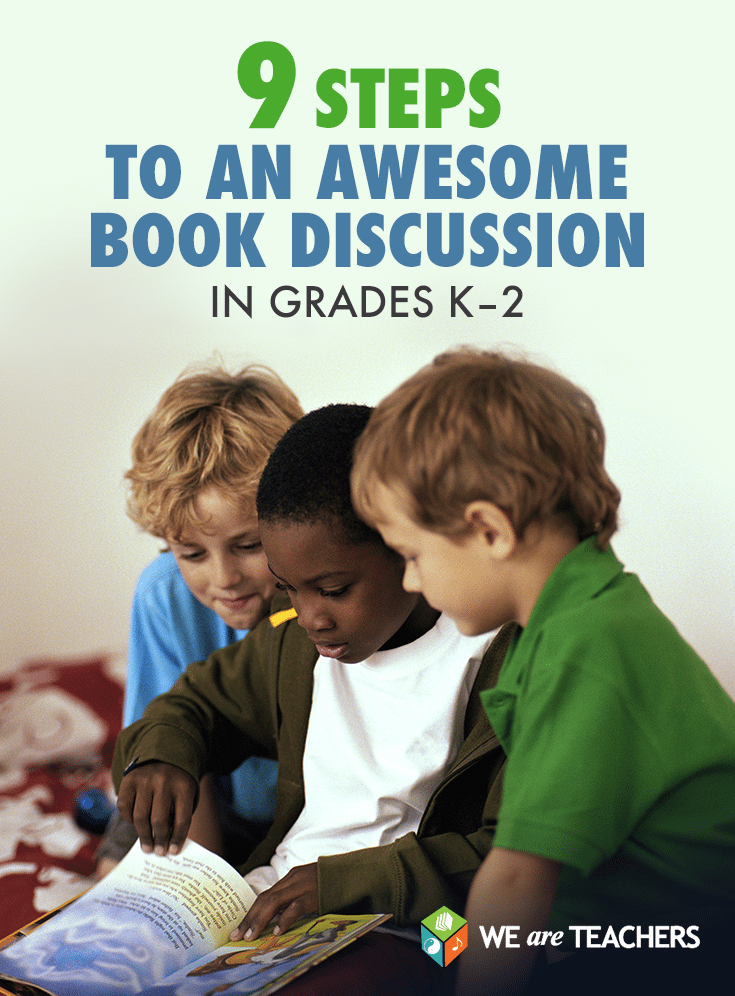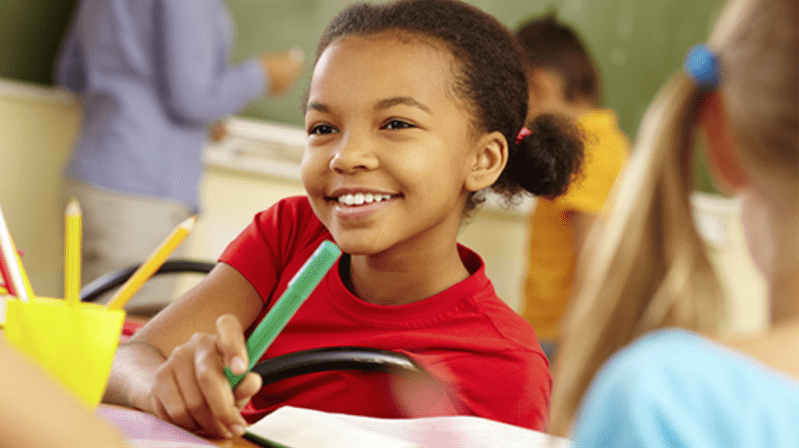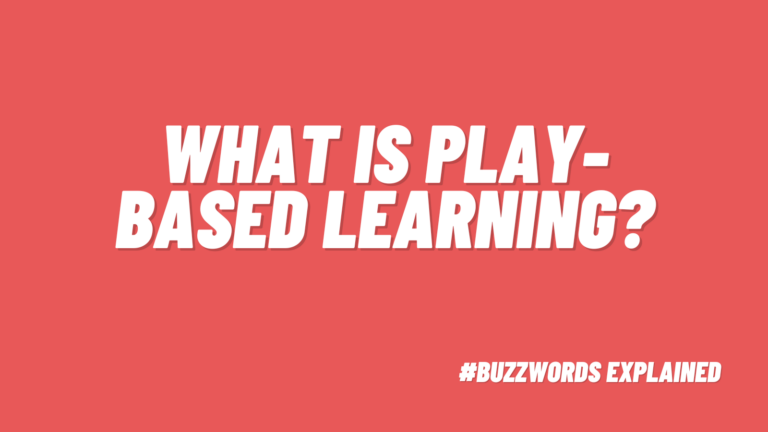The answer might be simpler than you think, says Mike Elsey, director of digital media for the Great Books Foundation. Slow down! Before rushing on to the next chapter, unit or benchmark, take time with a text, tease it apart, and show kids where your own wonders, questions, and discoveries came from and how they can find their own.
Easier said than done, right? That’s why we’re sharing the following nine video clips and ideas that provide you with a framework for awesome book discussions every time.
1. Begin by reading aloud.
Reading aloud has likely long been part of your repertoire—and for good reason. Reading aloud lets you model how the story should be read, with the right inflection and emphasis, and keeps students from being inhibited by words they might not know—especially in the early grades. Being read to is also enjoyable, and we shouldn’t discount that. Allowing the words to settle over your students as you read to them builds their love for a good story in the first place.
2. Encourage questioning.
Good questions are at the root of good conversation, and they arise at all points in the reading process. As students follow along with you in their books, encourage them to use sticky notes to mark words or passages that raise questions for them, whether it’s a word they don’t recognize, an action they don’t understand or a connection they want to explore. You can also ask students to share their questions out loud and then write them down for later discussion.
3. Share with a friend.
You know when you finish a great book and your first instinct is to call a friend to talk to him or her about it? We want your students to feel the same way! Following your first read-aloud, invite your students to share the notes and questions they recorded with a peer. You can also dedicate a space on the board for them to post their questions. This process helps students get their thoughts out and verbalize the aspects of the story that caught their attention.
4. Reread, reread, reread!
Of course, you won’t reread every piece of text in your curriculum. But when your goal is substantive conversation, rereading should become part of your routine. The second reading helps students pick up on details, words and questions they might not have heard the first time. Your students can read the piece silently this time, you can read it again aloud or you can assign it for homework. As they read it a second time, your students might even be able to answer some of their own questions.
5. Act out parts of the story.
Acting out the story is not only fun, it can help kinesthetic and visual learners understand what the characters are doing. Your students can also continue to write notes and questions about the story.
6. Explore central questions.
All your reading and note taking up to this point have been in preparation for the main event: the class discussion! This is when you begin to engage in the bigger questions and deeper themes that are present in the story. The goal is for you to become a facilitator as your students explore these questions through conversation with each other, but they will need more support in the beginning. Three questions that work for getting the ball rolling: What do we know? What do we think we know? What do we want to know?
7. Ask for evidence.
Where did you find that? What page is that from? Where’s your evidence? These are all good prompts to help students understand how textual evidence deepens and enriches a conversation about what they read.
8. Challenge students to agree or disagree.
It can be instinctive to respond positively to a student’s contribution and then move on to the next person. But the real magic happens when you begin to position students’ ideas in contrast with or in support of one another. Your students will learn that respectful disagreement is part of academic conversation—and how different pieces of evidence from the same text can be used to support widely differing opinions.
9. Write or illustrate in response.
The goal of any conversation about reading should be that “everyone ends up with their own answer that satisfies” them. These answers are what inform the next step—writing or drawing about the text. As students work on their responses, ask them to think about whether your discussion led them to change their minds, formulate a new idea or stick with their original explanation. Their answers might surprise you.
Looking for great material for your next reading discussion? Check out these free stories & lessons from the Great Books Foundation.



